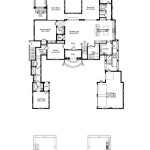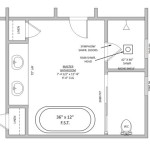Colonial House Plans: A Classic New England Tradition
Colonial house plans evoke a sense of timeless elegance and charm, drawing inspiration from the architectural heritage of New England. These classic designs seamlessly blend traditional aesthetics with modern functionality, creating homes that are both beautiful and comfortable.
Architectural Elements of Colonial House Plans
Colonial house plans typically feature symmetrical facades with a central doorway and flanking windows. The exterior walls are often clad in wood clapboard or brick, giving the homes a warm and inviting appearance. Gables and dormers adorn the rooflines, adding visual interest and maximizing natural light. Windows are typically double-hung with six-over-six or nine-over-six lights, enhancing the classic look.
Floor Plans and Layouts
Colonial house plans typically prioritize livability and functionality. The main floor commonly features a formal living room and dining room, as well as a spacious kitchen that serves as the heart of the home. Bedrooms and bathrooms are typically located on the second floor, ensuring privacy and tranquility. Some plans may include a finished attic or third floor, providing additional living space or storage.
Variations within Colonial House Plans
While Colonial house plans share essential characteristics, there are subtle variations that distinguish different styles. Cape Cod style homes are known for their low-slung profiles, hipped roofs, and central chimneys. Georgian style homes are more formal, with symmetrical facades, full-height windows, and elaborate moldings. Federal style homes are characterized by their simple, refined lines, fanlights above the doorways, and Palladian windows.
Benefits of Colonial House Plans
Colonial house plans offer numerous advantages, including:
- Timeless Appeal: Colonial designs have stood the test of time, ensuring your home will never go out of style.
- Historic Charm: These house plans evoke the charm and character of historic New England homes.
- Versatility: Colonial house plans can be adapted to suit a variety of lot sizes and architectural preferences.
- Flexibility: The classic floor plans allow for easy customization to meet specific needs.
Considerations for Building a Colonial House
Before embarking on the construction of a Colonial house, consider the following factors:
- Regional Authenticity: Ensure that the specific Colonial style you choose aligns with the local architectural heritage.
- Lot Size: Colonial house plans require ample lot space to preserve their symmetrical facades and exterior detailing.
- Maintenance: Wood clapboard exteriors and multi-paned windows require regular maintenance to maintain their integrity.
- Cost: Colonial house plans can be more expensive to build due to their complex architectural details and the use of premium materials.
Conclusion
Colonial house plans are a timeless architectural choice that embodies the charm and tradition of New England. Their symmetrical facades, classic floor plans, and elegant detailing create homes that are both beautiful and functional. Whether you are looking to build a primary residence or a vacation retreat, a Colonial house plan can provide the perfect foundation for your dream home. By carefully considering the variations within the style, as well as the practical factors involved, you can create a Colonial home that will stand the test of time and bring endless joy.

Colonial Early New England Homes

Colonial House Plans Styles Sizes And Floor

88 Colonial House Plans Ideas In 2024

Colonial Early New England Homes

Home Classic Colonial Homes

Plan 3462

50 Top New England House Plans And Northeast Style Designs

Elbring New England Style Home Plan 055d 0155 Search House Plans And More

Home Classic Colonial Homes

Vintage Home Plans Gambrel 2








